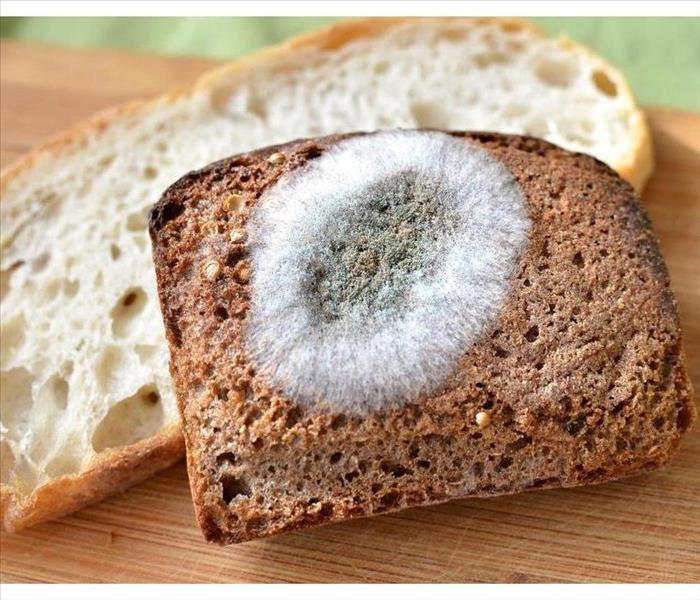3 Steps for Handling Moldy Bread
10/27/2021 (Permalink)
Ways To Handle Moldy Bread
Mold spores in your Apison, TN, home’s air are always looking for moist, damp places to thrive. From organic materials like paper and drywall to common household foods, these spores can grow rapidly once they find the right environment. Baked goods, such as bread, can be especially vulnerable to different types of fungal growth. If you discover bread mold in your kitchen, it is important that you know how to handle and dispose of it properly.
1. Do Not Scrape Off the Mold
Cutting or scraping fungus growth off a loaf of bread can send mold spores into the air, where they can settle elsewhere in your kitchen to grow anew. You may also not be able to remove all the mold, which makes the bread unsafe to eat. It is wiser to dispose of the bread altogether.
2. Bag the Bread
Bread mold will likely continue to grow once you throw the loaf away and may spread throughout your trashcan if you do not contain it. Before you dispose of the bread, wrap it tightly in a plastic bag and secure the end. You may want to throw the bag into your outdoor dumpster instead of your kitchen trash as an additional precaution.
3. Clean the Area Thoroughly
Because mold can spread quickly, it is wise to sanitize the area where the bread was stored. If the loaf was kept in the refrigerator, check foods nearby to ensure that no fridge mold has formed on them. Sanitize the shelf but avoid using a bleach-based cleaner, as this may contribute to moist conditions that allows mold to thrive. If you suspect any fungi has spread, considering calling in a mold damage and restoration service to inspect and treat your home.
Bread mold can be a common occurrence, especially during humid weather in Apison, TN. While there is no cause to be alarmed when this fungus develops, knowing how to dispose of it properly can prevent its spores from spreading.






 24/7 Emergency Service
24/7 Emergency Service
